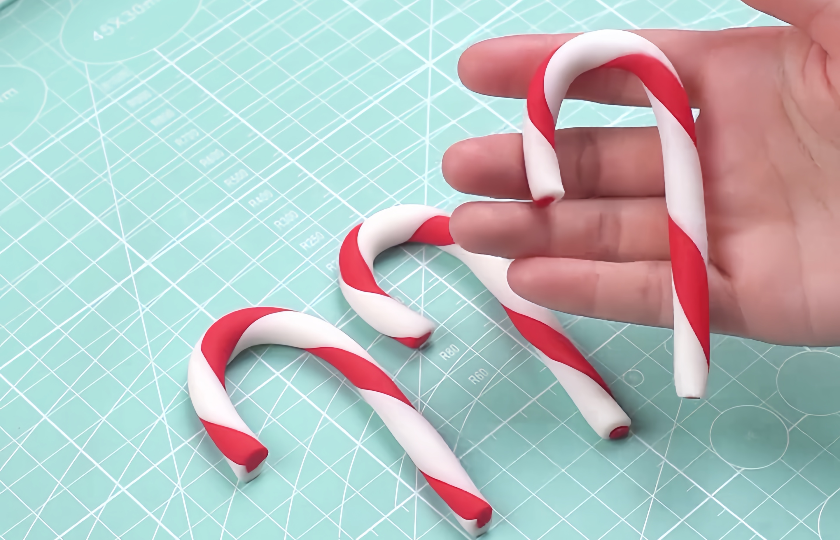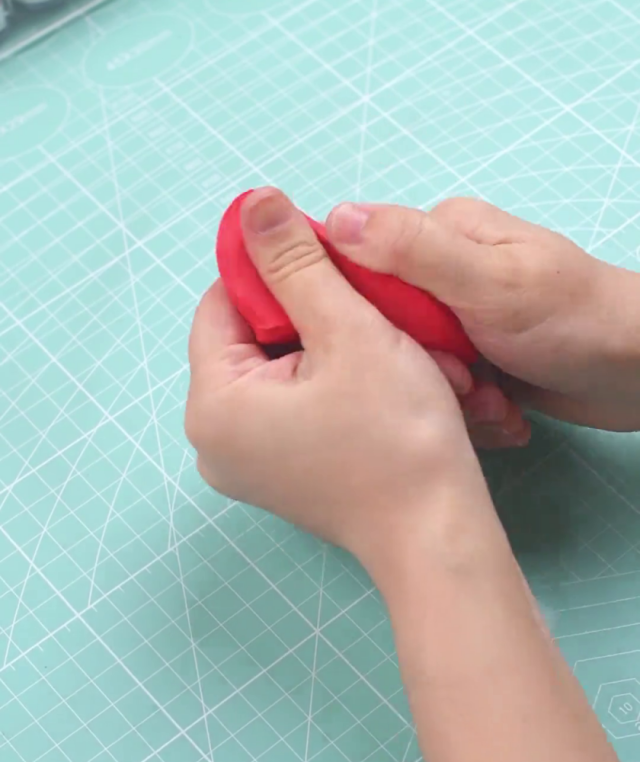Homemade Christmas Candy Canes

Every Christmas candy cane is like a little Christmas messenger, conveying the joy of the festival. Learn to make it and add a unique memory to your Christmas.
What does a candy cane symbolize?
It is often regarded as a symbol of Jesus Christ. Its shape is similar to a shepherd's staff, and shepherds have special meanings in Christian culture.
The red stripes symbolize the blood shed by Jesus Christ for the redemption of humanity, and the white part symbolizes the purity and innocence of Jesus Christ.
This symbolic meaning makes candy canes a characteristic item with religious connotations during Christmas. At the same time, as a traditional Christmas candy, they are deeply loved by people.

What are the difficulties in production?
The difficulties in making Christmas candy canes mainly focus on the following aspects:
Fondant handling: Fondant needs to be kneaded until it is fine and uniform. The strength and time should be well controlled. Kneading too hard will make the fondant hard. Kneading too lightly will make it difficult to be fine and will affect the appearance and texture of the candy. Kneading in small batches is easier to operate.
Shape control: When rolling into a long strip, keep the thickness consistent. Otherwise, the finished product is prone to be uneven. When spirally winding, ensure that the two-color strips are evenly spaced and the colors look neat. Only then will the final effect be beautiful.
Even cutting: It is best to measure the length in advance when dividing. Each section should be as similar in size as possible. When cutting, the knife should be stable and the action should be quick to avoid cutting unevenly and affecting the overall appearance.
Bending treatment: When bending the front end of the sugar strip, control the angle and arc. Bending too much or too little will appear unnatural. When bending, the action should be gentle and smooth. After several attempts, the ideal candy cane shape can be made.
Can food coloring be added to change the color?
Food coloring can be added to change the color.
Food coloring is a safe additive specially used for food coloring and meets food safety standards. During the production process, if you are not satisfied with the color of the fondant, you can adjust it by adding food coloring.
When making at home, strictly follow the instructions for use to control the dosage. Adding too much will affect food safety and taste, such as too dark color and strange taste. At the same time, choose reliable quality food coloring products to ensure food safety.
Will the properties of fondant change after heating?
The properties of fondant will change after heating.
Since fondant is composed of powdered sugar, syrup, etc., heating will cause moisture to evaporate and powdered sugar to caramelize, resulting in a darker color, a harder and more brittle texture, loss of plasticity, and a change in taste, making it rough and no longer suitable for consumption.
INGREDIENTS
Main Ingredients
-
·50g Fondant
COOKING STEP
Step 1
Take 50 grams of fondant (there are two colors, red and white). Knead each color until it is fine. Here, only the red one is shown as an example.

Step 2
Put the kneaded fondant on the table and roll it into a long strip shape.

Step 3
Insert the rolled long strip into the clay extruder, and then screw on the cap.

Step 4
Extrude long strips of red and white colors through the clay extruder.

Step 5
Spiral the extruded two-color long strips together to make it show a spiral and alternating effect.

Step 6
Use a carving knife to evenly divide the rolled long strip into three parts.

Step 7
Bend the front end of each sugar strip. In this way, the Christmas candy cane is made.

More recipes worth trying
Festive Delight: Christmas Brownie
Festive Fun Elements Christmas Bon Bon Crackers
Super Simple Chocolate Christmas Tree
Storage instructions
For storing Christmas candy canes, use a sealed container and place it in a cool and dry place to avoid moisture and direct sunlight. If storing for a long time, refrigeration in the refrigerator is more appropriate.
When storing at room temperature, put them in a sealed jar or food-grade fresh-keeping bag to ensure tight sealing and prevent the moisture in the air from making the candies sticky and deformed. Place it in a position with stable room temperature and away from light, such as in a storage cabinet or cupboard. There will be no problem for 1 to 2 weeks.
If the indoor temperature is relatively high, refrigeration is a better choice. The candies should be packed separately in sealed bags to avoid the moisture in the refrigerator from affecting the taste. Let it warm up for 5 to 10 minutes before eating to prevent water droplets from forming on the surface. If the candies get damp, they will stick together.
Recipe Variations
Flavor variations: Adding lemon peel shreds or orange peel shreds to the fondant can give the candy a faint fruity fragrance and make it fresh and not greasy. Different colors of food coloring can also be added, such as green or gold, to make the candy more festive.
Shape innovation: In addition to being made into a cane shape, the sugar strip can also be made into heart, star or letter shapes, suitable for decoration on different occasions and more creative.
Filling addition: Wrapping a small amount of jam or chocolate chips in the sugar strip makes it have a layered taste. When wrapping the filling, the sugar strip should be a little thicker to avoid the filling leaking out and affecting the appearance.
Decoration variations: The surface of the candy can be coated with a layer of granulated sugar to increase the luster. It can also be dipped in chocolate and then sprinkled with nut pieces or colored sugar granules to make the taste more abundant and the appearance more beautiful.
FAQs:
Keep fondant dry: Fondant is prone to becoming sticky when encountering moisture. When operating, ensure that the hands and tabletop are dry. You can dry your hands before operating and then gently pat on a small amount of starch.
Use an anti-sticking mat: Choose a silicone mat or a professional anti-sticking mat as the operating table surface. The material is smooth and not easy to stick, and it is also more convenient to clean.
Add an appropriate amount of powdered sugar: When fondant is too soft, a small amount of powdered sugar can be added and kneaded to increase hardness and prevent sticking to hands. Add it in batches to avoid excessive addition that makes fondant dry.
Refrigerating for 10 to 15 minutes can also quickly cool down the sugar strip and have a better shaping effect. When operating, pay attention to doing it in batches to reduce the influence of hand temperature.
Control the room temperature at 20-25 degrees Celsius and keep the humidity at about 50% to avoid the sugar strip becoming soft due to excessive heat or humidity in the environment.
Because slowing down allows you to control the winding process of the sugar strip more precisely. In this relatively slow process, you can better adjust the position of each circle to make it arranged more closely and orderly.
At the same time, pulling slightly harder when rolling is like braiding a rope. This can make the fit between the two-color long strips closer and reduce gaps, thus forming a tighter spiral. In addition, when extruding the red and white long strips, try to make the strips as uniform in thickness as possible. In this way, when spirally rolling, they can fit better and avoid a loose spiral due to uneven thickness.
The second method is to use small tools such as toothpicks to carefully pick open the stuck place. Toothpicks are relatively sharp and can be accurately inserted into the stuck gap for separation.

















